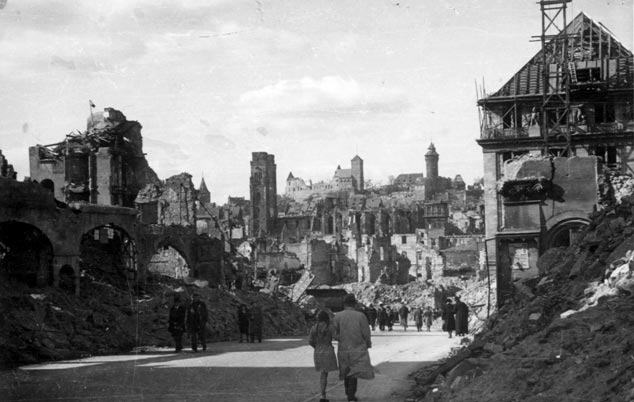
Like the countries of Western and Northern Europe and the Balkans, the Soviet Union is expected to fall in a "swift campaign." After major initial successes, the German forces draw up before Leningrad and Moscow without being able to take either city. Here, and not just in the later catastrophe at Stalingrad in the winter of 1942/43, it already becomes evident that the German forces are inadequate for Hitler's program of conquest. Ultimately the Red Army gains the upper hand in fighting that is as bitter as it is costly in lives. In the fall of 1944 the Soviets reach the borders of the Reich.
During the same period, British and American troops, operating from the south, expel the Wehrmacht little by little from North Africa, Sicily, Southern and Central Italy. The Allied invasion in Northern France in June 1944 opens a third front against the Reich, whose outlook becomes increasingly bleak.
Nevertheless, Hitler continues to fight. Hitherto exposed "only" to air attacks, in the final phase of the war Germany becomes the setting for heavy losses in a ground war. Not until the Red Army has already occupied the Berlin government district does Hitler give up, committing suicide in the bunker of the Reich Chancellery. The German Wehrmacht finally capitulates in the night of May 8 to 9, 1945.
The violence with which Germany had covered all of Europe ultimately rebounds on the Germans themselves. Millions flee to the West or are expelled. The toll of those who die in flight or expulsion is between 600,000 and 2,000,000. The total loss of life in this war is estimated at more than 50 million.



